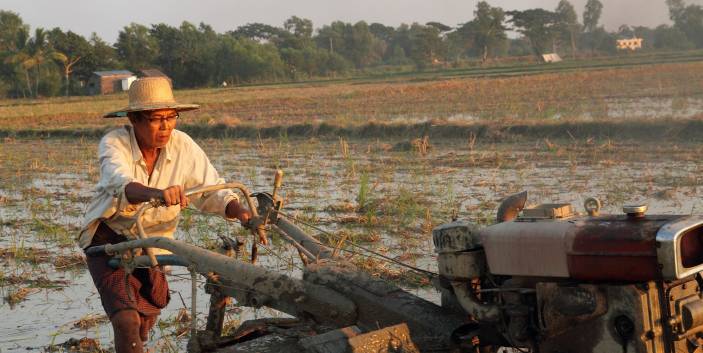
This is the first blog in a series coinciding with our side event entitled Innovations on inclusion at the United Nation’s Commission for Social Development in February 2016. Tony German from the Development Initiatives discusses how better data can help deliver on the Sustainable Development Goal’s commitment to “leave no one behind”.
Ending poverty in all its forms everywhere – the commitment explicit in the Sustainable Development Goals (SDGs) for 2030 agreed in New York last September – can be summed up in a simple imperative: leave no one behind.
The goals are universal – applicable to everyone. Nobody should be denied services, disempowered or excluded from the social and economic mainstream because of their age, their identity, their beliefs or their disability.
Data and the SDGs
So the challenge and opportunity for everyone who collects or provides data is to ensure that from 2016 onwards, everyone is counted, and counted with the respect that every person’s identity is due. That means not missing people out of surveys because they are old or gay or because they live in remote rural areas. It means counting the work people do, even if what they produce from hours of labour is small.
New ways of gathering data must deliver richer datasets that deliver evidence to underpin more effective delivery of services to those in need. That get beyond stereotypical assumptions about older people and those with disabilities, such as that they are not productive.
“Leaving no one behind” means counting everyone. Not country aggregates. Not modelled data based on the country next door. Counting every last person, so we can this time, put the last first. As 19th century US President Andrew Jackson put it: “We should measure the health of our society not at its apex, but at its base”.
The success of Brazil’s Bolsa Família social protection programme is partly explained by the registry of 24 million families that enables resources to be matched to the 40% of the population who most need support.
What we need to improve data
For the new SDGs to deliver, we need investment in statistical capacity, especially at country level. It is time for donors to match their rhetorical enthusiasm for transparency and the data revolution with substantial hard cash, and we need it now.
Statisticians will like this! But the quid pro quo must be for the statistical community to embrace new methods, including crowdsourcing and the challenge of reconciling high quality reliable statistics with the demand for real time data that can inform rapid choice and delivery.
In the era of the data revolution, everyone collecting data should at least ensure that it is disaggregated by quintile, gender, geography, age and disability. How else can we tell whether the benefits of growth are at the very least delivering an equal share of progress to the poorest 20%? From the youngest to the oldest, better data can help deliver on the promise of the SDGs, making us all more prosperous and secure.
The data revolution gives us the opportunity to deliver on the ambition of ending poverty. Rather than just asserting that “pro poor” or “inclusive” growth will reach the poorest people, we must actually measure whether it does.
To leave no one behind means recognition that groupings like LICs and MICs (low-income and middle-income countries) are past their use-by date. The acid test of the SDGs will not be their impact on groups like the G7 or the G77 or the G20, it will be how they deliver for the poorest 20% of people in every country and across the globe: the important grouping is the P20, where the P is for “people”.
Development Initatives’ P20 initiative aims to track progress of the poorest 20% of people globally and in every country from a 2015 baseline. Focusing on income, nutrition, civil registration and a small basket of core indicators including health, education and security, the aim is to deliver a topline, easy to understand picture of how the poorest 20% – the P20 – are sharing in progress.
Read the other blogs in the United Nations Commission for Social Development series:
- Polly Meers, ADD International, and Dr Marion Steff, Sight Savers: The 2030 Agenda can’t be achieved unless we listen to the voices of the marginalised
- Vappu Taipale, incoming trustee at HelpAge and chair of affiliate Valli: What makes a city age-inclusive?
For more global ageing data, see HelpAge’s Global AgeWatch Index 2015.
